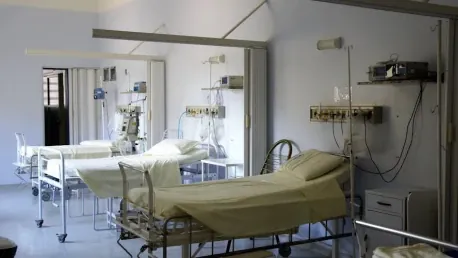Amid escalating healthcare costs and opaque billing practices, former President Donald Trump has doubled down on his commitment to healthcare price transparency through a new executive order. This effort aims to empower patients with essential information to make informed healthcare decisions by mandating hospitals to publicly disclose the prices for their services. The initiative builds on a 2019 directive intended to demystify healthcare expenses and foster competition among providers, potentially leading to significant consumer savings.
Renewed Commitment to Price Transparency
In a decisive move to enhance healthcare transparency, Donald Trump signed a new executive order that tasks the Departments of the Treasury, Labor, and Health and Human Services (HHS) with developing and enforcing a comprehensive framework. This new directive reinforces the 2019 mandate, which required hospitals to disclose the actual prices patients and insurers pay for services upfront. The primary objective of these measures is to equip consumers with detailed pricing information, enabling them to shop around and make more informed decisions regarding their healthcare needs.
The Trump administration’s goal is clear: by providing transparent pricing, hospitals may be pressured to reduce the costs of their services, particularly for high-cost procedures. This newfound competition among healthcare providers could lead to substantial consumer savings and a more efficient healthcare system overall. The anticipation is that transparency will not only foster competition but also drive hospitals to lower their prices, making healthcare more accessible and affordable for all.
Challenges in Implementation and Compliance
Despite the clear intent behind the 2019 directive, numerous advocacy groups have reported that hospitals have largely failed to comply with the transparency rules effectively. Reports from the Patient Rights Advocate and HHS Office of Inspector General in November 2021 highlighted a disheartening level of noncompliance. These findings indicate that only a small percentage of hospitals are fully adhering to the transparency requirements, such as listing prices for up to 300 shoppable services and posting a machine-readable file with negotiated rates.
A consensus has emerged that enforcement of these rules has been inadequately rigorous, with both advocacy groups and Trump himself placing the blame on the Biden administration. The lack of stringent penalties for non-compliant hospitals has led to widespread laxity in adherence, undermining the intended benefits of the price transparency rules. The data clearly reflects that only a fraction of non-compliant hospitals faced financial repercussions, emphasizing the need for a more robust enforcement strategy to ensure compliance and ultimately benefit consumers.
Economic Implications and Potential Benefits
The Trump administration’s economic analysis of the price transparency measures suggests significant potential benefits for various stakeholders in the healthcare system, including consumers, employers, and insurers. By making pricing information publicly accessible, it is anticipated that competition among hospitals will intensify, driving down the costs of high-priced procedures. This competitive environment could potentially lead to billions of dollars in cumulative savings, easing the financial burden on patients and the broader healthcare market.
The new executive order places a strong emphasis on stringent enforcement, reiterating Trump’s unwavering commitment to transparent healthcare pricing. According to the executive order, holding hospitals and health plans accountable for incomplete or missing price data is not only crucial but integral to achieving the objective of reduced healthcare costs. This renewed focus on accountability aims to ensure that the benefits of transparent pricing are fully realized, ushering in a more cost-effective healthcare system.
Overarching Trends in Healthcare Transparency
Addressing longstanding issues in the healthcare system necessitates a standardized framework to ensure uniform transparency across hospitals and health plans. Comprehensive and comparable pricing information is essential to tackle opaque billing practices, unexpected medical bills, and hidden fees that have long plagued the system. Transparent pricing aims to foster an environment where consumers are better equipped to navigate their healthcare choices without the fear of unforeseen costs.
The executive order mandates that the three federal agencies develop an enforcement framework within 90 days, marking a decisive step towards solving these pervasive problems. Enhanced compliance measures, which include the publication of negotiated rates both within and outside the network, are designed to provide patients with a clear and predictable picture of their healthcare expenses. This move intends to eliminate the element of surprise in medical billing and create a more transparent and trustworthy healthcare market.
Advocacy and Support for Transparency
Amid rising healthcare costs and unclear billing practices, former President Donald Trump has reinforced his commitment to healthcare price transparency with a new executive order. This initiative strives to empower patients with the necessary information to make better-informed healthcare decisions by requiring hospitals to publicly disclose the prices they charge for various services. This effort builds upon a 2019 directive that aimed to clarify healthcare expenses and foster competition among providers, which could ultimately lead to significant savings for consumers. By bringing more transparency to the complex world of medical billing, the hope is that patients will be able to compare prices and make choices that best suit their financial situations, thus promoting a more competitive and fair healthcare market. With this renewed focus, there is potential for increased consumer awareness, profitability in decision-making, and overall improvement in the healthcare system’s trustworthiness.









